I am trying to complete this tutorial using version 2 of aws-sdk, I have included these extra gems
gem 'aws-sdk-core'
gem 'dotenv-rails', :groups => [:development, :test]
my .env file in the root folder is
S3_BUCKET=XXXredactedXXX
AWS_ACCESS_KEY_ID=XXXXXXXXXXXXXXredactedXXXXXX
AWS_SECRET_ACCESS_KEY=XXXXXredactedXXXXXX
AWS_REGION=Oregon
I am trying to test the configuration by running these commands in the rails console.
s3 = Aws::S3::Client.new
resp = s3.list_buckets
resp.buckets.map(&:name)
#=> ["bucket-1", "bucket-2", ...]
I assume the config in the .env file is working because without the AWS_REGION entry it threw this error
Aws::Errors::MissingRegionError: missing region; use :region option or export region name to ENV['AWS_REGION']
This 'resp = s3.list_buckets' command triggers this error 'Seahorse::Client::NetworkingError: getaddrinfo: Name or service not known'
The firewall ports are open
To Action From
-- ------ ----
80 ALLOW Anywhere
443 ALLOW Anywhere
53693 ALLOW Anywhere
8118 ALLOW Anywhere
21/tcp ALLOW Anywhere
1863 ALLOW Anywhere
53 ALLOW Anywhere
3000 ALLOW Anywhere
80 (v6) ALLOW Anywhere (v6)
443 (v6) ALLOW Anywhere (v6)
53693 (v6) ALLOW Anywhere (v6)
8118 (v6) ALLOW Anywhere (v6)
21/tcp (v6) ALLOW Anywhere (v6)
1863 (v6) ALLOW Anywhere (v6)
53 (v6) ALLOW Anywhere (v6)
3000 (v6) ALLOW Anywhere (v6)
The bucket log entry
XXXredactedXX my-first-bucket-tutorial985 [10/Mar/2015:06:31:51 +0000] 10.232.8.40 XXXredactedXX D37580D87A1D8EE9 REST.GET.NOTIFICATION - "GET /?notification HTTP/1.1" 200 - 115 - 15 - "-" "aws-internal/3" -
**Update, credentials set and working
Amazon have a ruby sample here and a number of credentials options here. There is a command line tool aws command line utility here. This tool creates a directory (.aws) with a credentials and a config file. This replaces the .env gem I believe because it serves the same purpose.
Credentials
[default]
aws_access_key_id = XXXXXredcatedXXX
aws_secret_access_key = XXXXXredactedXXXX
Config
[default]
#region = us-west-2
#output = json
As you can see the region is commented out and does not affect the ruby example because a region is supplied when the resource instance is created.
Gemfile
source 'https://rubygems.org'
gem 'aws-sdk', '~> 2.0.22'
gem 'uuid', '~> 2.3.7'
s3_sample.rb
# Copyright 2013 Amazon.com, Inc. or its affiliates. All Rights Reserved.
#
# Licensed under the Apache License, Version 2.0 (the "License"). You
# may not use this file except in compliance with the License. A copy of
# the License is located at
#
# http://aws.amazon.com/apache2.0/
#
# or in the "license" file accompanying this file. This file is
# distributed on an "AS IS" BASIS, WITHOUT WARRANTIES OR CONDITIONS OF
# ANY KIND, either express or implied. See the License for the specific
# language governing permissions and limitations under the License.
require 'rubygems'
require 'bundler/setup'
require 'aws-sdk'
require 'uuid'
s3 = Aws::S3::Resource.new(region: 'us-west-2')
uuid = UUID.new
bucket_name = "ruby-sdk-sample-#{uuid.generate}"
bucket = s3.bucket(bucket_name)
bucket.create
object = bucket.object('ruby_sample_key.txt')
object.put(body: "Hello World!")
